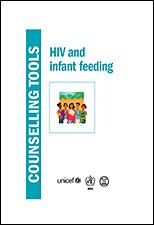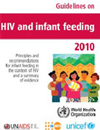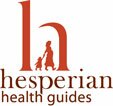
|
Home | Research and Links | HIV and Breastfeeding News | Videos
Research and Links
Articles on HIV and BreastfeedingPractice Update: HIV and breastfeeding - Morrison P. - Essentially MIDIRS, August 2014;5(7):38-9, available at page 38 Breastfeeding Gateway: HIV
WHO — Guidelines on HIV and infant feeding 2010
|
||||||||||||||
 |
English (Director's guide) [pdf 1.67Mb] |
Russian (Director's guide) [pdf 731kb] |
Overview
This course is designed to provide knowledge and skills to health workers who work with mothers and babies in areas with high prevalence of HIV infections. It enables health workers to counsel HIV-positive women about infant feeding decisions, assisting them to feed their infants as effectively and safely as possible in their circumstances.
WHO — HIV and Infant Feeding Counselling Tools
 |
Authors: Thomas, Elizabeth.; Piwoz, Ellen G.; World Health Organization; UNICEF; USAID, Number of pages: 42 + 95 |
|
|
Counselling cards (English) [pdf 662kb] |
Counselling cards (Spanish) [pdf 903kb] |
|
Overview
These tools have been created to help health workers before, during and after a counselling session so that they can better support HIV-positive mothers.
Counsellors using the tools should have received specific training through such courses as the WHO/UNICEF Breastfeeding Counselling: A training course and the WHO/UNICEF/UNAIDS HIV and Infant Feeding Counselling: A training course, or the newly developed integrated infant and young child feeding counselling course. This latter course combines breastfeeding, complementary feeding and HIV and infant feeding counselling training.
The tools consist of the following parts:
- Counselling cards (ISBN 92 4 159249 4) that describes the counselling process. Infant feeding counsellors should use the flipchart during counselling sessions with HIV-positive pregnant women and/or mothers. The cards need local adaptation to a) identify the most acceptable/feasible feeding options from 0 to 6 months, and b) identify the most suitable foods to cover nutrient requirements from 6 to 24 months.
- Take-home flyers that explain how to practice safer infant feeding, according to the mother's decision. The counsellor should use the relevant flyer to teach the mother, and she can then use it as a reminder at home.
- A Reference guide (ISBN 92 4 159301 6) that provides more technical and practical details than the counseling cards. Counsellors can use it as a handbook.
- An Orientation guide (ISBN 92 4 159653 4) that suggests ways for health care managers to train infant feeding counsellors on how to use these tools.
HIV and infant feeding: framework for priority action
Geneva, World Health Organization, 2003
Brochure [pdf 766kb]![]() | Chinese [pdf 492kb]
| Chinese [pdf 492kb]![]() | English [pdf 748kb]
| English [pdf 748kb]![]() | French [pdf 658kb]
| French [pdf 658kb]![]() | Portuguese [pdf 775kb]
| Portuguese [pdf 775kb]![]() | Spanish [pdf 743kb]
| Spanish [pdf 743kb]![]()
HIV and infant feeding: guidelines for decision-makers
Geneva, World Health Organization, 2003
English [pdf 1.42Mb]![]() | French [pdf 1.42Mb]
| French [pdf 1.42Mb]![]() | Spanish [pdf 647Kb]
| Spanish [pdf 647Kb]![]()
HIV and infant feeding: a guide for health-care managers and supervisors
Geneva, World Health Organization, 2003
English [pdf 1.41Mb]![]() | French [pdf 1.52Mb]
| French [pdf 1.52Mb]![]() | Spanish [pdf 636Kb]
| Spanish [pdf 636Kb] ![]()
HIV and infant feeding: a review of HIV transmission through breastfeeding
Geneva, World Health Organization, 2003
English (2007) [pdf 834kb]![]() | French (2004) [pdf 791kb]
| French (2004) [pdf 791kb] ![]() | Spanish (2004) [pdf 541kb]
| Spanish (2004) [pdf 541kb]![]()
HIV and Infant Feeding
Rapid advice: revised WHO principles and recommendations on infant feeding in the context of HIV – November 2009
 Authors: WHO, Number of pages: 28, Publication date: 2009, Languages: English, ISBN: 9789241598873
Authors: WHO, Number of pages: 28, Publication date: 2009, Languages: English, ISBN: 9789241598873
Overview
On 30 November, the eve of World AIDS Day, the WHO released new recommendations on treatment, prevention and infant feeding in the context of HIV, based on the latest scientific evidence.
The new recommendations call for earlier initiation of antiretroviral therapy (ART) for adults and adolescents, the delivery of more patient-friendly antiretroviral drugs (ARVs), and prolonged use of ARVs to reduce the risk of mother-to-child transmission of HIV. And, for the first time, WHO recommends that HIV-positive mothers or their infants take ARVs while breastfeeding to prevent transmission.
Related links
Rapid advice: antiretroviral therapy for HIV infection in adults and adolescents
Rapid advice: use of antiretroviral drugs for treating pregnant women and preventing HIV infection in infants
HIV transmission through breastfeeding (2008)
A review of available evidence - update 2007
Authors: WHO, UNICEF, UNAIDS, UNFPA, Pages: 54, Publication date: 2008 (English - update version), 2005 (French), 2004 (Spanish),Languages: English, French, Spanish, ISBN: 978 92 4 159659 6
This publication is an update of the review of current knowledge on HIV transmission through breastfeeding, with a focus on information made available between 2001 and 2007. It reviews scientific evidence on the risk of HIV transmission through breastfeeding, the impact of different feeding options on child health outcomes, and conceivable strategies to reduce HIV transmission through breastfeeding with an emphasis on the developing world.
English (2008)[pdf 835kb] ![]() | French (2005)[pdf 721kb]
| French (2005)[pdf 721kb] ![]() | Spanish (2004)[pdf 541kb]
| Spanish (2004)[pdf 541kb]![]()
Overview
This publication is an update of the review of current knowledge on HIV transmission through breastfeeding, with a focus on information made available between 2001 and 2007. It reviews scientific evidence on the risk of HIV transmission through breastfeeding, the impact of different feeding options on child health outcomes, and conceivable strategies to reduce HIV transmission through breastfeeding with an emphasis on the developing world.
Facts for life (2010) - Breastfeeding - HIV - Safe Motherhood - Newborn Health
The handbook, Facts for Life, provides vital messages and information for mothers, fathers, other family members and caregivers and communities to use in changing behaviours and practices that can save and protect the lives of children and help them grow and develop to their full potential.
PMTCT strategic vision 2010–2015 - (2010)
WHO - Preventing mother-to-child transmission of HIV to reach the UNGASS and Millennium Development Goals
HIV and infant feeding: Update (2007)
Based on the technical consultation held on behalf of the Inter-agency Task Team (IATT) on Prevention of HIV infections in pregnant women, Mothers and their Infants, Geneva, Switzerland, 25-27 October 2006
HIV and infant feeding: new evidence and programmatic experience (2007)
Report of a technical consultation held on behalf of the Inter-agency Task Team (IATT) on Prevention of HIV infections in pregnant women, Mother and their Infants, Geneva, Switzerland, 25-27 October 2006
WHO HIV and infant feeding technical consultation - consensus statement (2007)
Held on behalf of the Inter-agency Task Team (IATT) on Prevention of HIV infections in pregnant women, mothers and their infants
Home-modified animal milk for replacement feeding: is it feasible and safe? (2006)
Discussion paper prepared for HIV and infant feeding technical consultation, 25-27 October 2006
HIV and infant feeding counselling (2005)
From research to practice
Update on dissemination and use of new and revised HIV and infant feeding publications (2005)
UNICEF and WHO call for stronger support for the implementation of the joint United Nations HIV and infant feeding framework (2004)
Full text [pdf 117kb] ![]()
HIV and infant feeding data analysis (2004)
Workshop report
HIV and infant feeding generic slide set (2004)
UNICEF and WHO joint statement on HIV and infant feeding (2004)
What are the options? (2004)
Using formative research to adapt global recommendations on HIV and infant feeding to the local context
Breastfeeding and replacement feeding practices in the context of mother-to-child transmission of HIV (2001)
An assessment tool for research
The Infant and Young Child Nutrition (IYCN) Project maintained a collection of useful resources on maternal, infant, and young child nutrition. Our collection offers a variety of IYCN materials in addition to high-quality publications, training materials, and other resources from a wide range of organizations. — Infant feeding and HIV
Lactation Management from Wellstart International
|
Visitors are invited but not required to help this tool to continue to be available by donating any amount they wish to Wellstart International, a US based 501(c) (3) non-profit organization that is compliant with the International Code of Marketing of Breastmilk Substitutes. |
Hesperian Health Guides
|
|
HIV and Breastfeeding publications from LINKAGES Project
Click here for a complete list of their publications
“Act Now!” Campaign in Zambia
Authoring organization(s): LINKAGES— Zambia - Published: 2004–2005
Summary: These brochures, created as part of the LINKAGES “Act Now” Campaign in Zambia, offer standardized messages on infant feeding and HIV for a variety of audiences, including mothers, youth, and health workers. Topics include prevention of mother-to-child transmission of HIV, HIV testing and counseling, and optimal infant and young child feeding behaviors.
Booklet:
- All in One: Antenatal, Postnatal, and Child Health

- PMTCT of HIV: A Behavior Change Communication Guide for Health Workers

- Protect Your Baby from HIV

Brochure:
- Counseling and HIV Testing

- Exclusive Breastfeeding is Best

- Leaders in the Frontline Against HIV/AIDS

- Young and Planning For Your Future
Poster:
- Counseling and HIV Testing
- Essential Messages for All Pregnant Mothers
- “Pregnant? Congratulations”
Challenging Assumptions: Breastfeeding and HIV/AIDS![]()
Authoring organization(s): Program for Appropriate Technology in Health - Published: 2008
Summary: This policy brief discusses the benefits of breastfeeding in light of the risk of perinatal HIV transmission.
HIV and Infant Feeding Technical Consultation: Consensus Statement
Authoring organization(s): Inter-Agency Task Team on Prevention of HIV Infections in Pregnant Women, Mothers, and Their Infants, World Health Organization - Published: 2006
Summary: This consensus statement is the product of the World Health Organization HIV and Infant Feeding Technical Consultation held on behalf of the Inter-Agency Task Team on Prevention of HIV Infections in Pregnant Women, Mothers, and Their Infants in Geneva, Switzerland, October 25–27, 2006. It outlines new evidence and research on HIV transmission through breastfeeding, new evidence on morbidity and mortality, improving young child infant feeding practices, new program data, and recommendations. Also included below are the reference documents that informed the consensus statement.
English: Consensus Statement![]() - French: Consensus Statement
- French: Consensus Statement![]()
Morrison P, What HIV-positive women want to know about breastfeeding, World AIDS Day 2013 issue of Fresh Start, Trinidad & Tobago, pages 8-12, 1 December 2013
Infant Feeding Counseling Materials
Authoring organization(s): Program for Appropriate Technology in Health - Published: 2006, 2008
Summary: These materials include clinical algorithms geared for health workers (not lay counselors) to use to counsel mothers and determine the most appropriate time to stop breastfeeding; an adaptation and finalization of the World Health Organization (WHO) Infant and Young Child Feeding Counseling: An Integrated Course, including new chapters on complementary feeding and country-specific recommendations; adaptations and local drawings/graphics inspired by the WHO counseling cards; and take-home brochures for mothers on exclusive breastfeeding, expressing breastmilk, and replacement feeding. The set also introduces a new follow-up form to be used at monthly postpartum visits for all infants of HIV-positive mothers.
English:
- Clinical Algorithm: Helping HIV-Positive Mothers Decide When to Stop Breastfeeding—Infant Age: 6–12 Months

- Clinical Algorithm: Helping HIV-Positive Mothers Decide When to Stop Breastfeeding—Infant Age: 12 Months and Older

- Key Objectives of Infant Feeding Counseling and Support in PMTCT Programs
- Please contact [email protected] to request a copy of the adapted and finalized World Health Organization (WHO) Infant and Young Child Feeding Counseling: An Integrated Course.
French:
- Clinical Algorithm: Helping HIV-Positive Mothers Decide When to Stop Breastfeeding—Infant Age: 6–12 Months

- Clinical Algorithm: Helping HIV-Positive Mothers Decide When to Stop Breastfeeding—Infant Age: 12 Months and Older

- Exclusive Breastfeeding Brochure

- How to Express Breast Milk Brochure

- Replacement Feeding Brochure

- Key Objectives of Infant Feeding Counseling and Support in PMTCT Programs

- Please contact [email protected] to request a copy of the adapted and finalized World Health Organization (WHO) Infant and Young Child Feeding Counseling: An Integrated Course.
Kenya Infant Feeding Assessment: Eastern and Western Provinces![]()
Author(s): Israel-Ballard K, Waithaka M, Greiner T, Authoring organization(s): IYCN, PATH , Published: 2009
Summary: This study was conducted in the Eastern and Western Provinces in Kenya in 2008 to assess the experiences of HIV-infected mothers’ and their infants’ during the time they were stopping breastfeeding.
Role of Breastfeeding Cessation in Mediating the Relationship between Maternal HIV Disease Stage and Increased Child Mortality among HIV-Exposed Uninfected Children
Author(s): Fox MP, Brooks DR, et al., Published: 2009
Summary: This study, published in the International Journal of Epidemiology, analyzed the role of breastfeeding cessation and its effect on mortality of HIV-exposed children.
ZVITAMBO Infant Feeding Materials
Authoring organization(s): ZVITAMBO, Ministry of Health Zimbabwe
Summary: These posters from ZVITAMBO contain key, consistent messages that are geared towards mothers, health workers, and other family and community members. The posters are supplemented by simple brochures.
- Start Breastfeeding in the First Hour of Life

- Expressing and Heat Treating Breast Milk

- Make Breastfeeding Safer

- Breastfeed Often

- Breast Milk Only Birth to 6 Months! Nothing But Breast Milk

- Breast Milk Only: Birth to 6 Months

- How to Practice Exclusive Breastfeeding (Cover)

- How to Practice Exclusive Breastfeeding (Inside)

- How to Express and Heat Treat Breast Milk

updated 13 July, 2018

| ▫ HealthPhone™ Mobile Apps ▫ HealthPhone™ ▫ Guide to Child Care ▫ imagine ▫ Community Video ▫ HealthRadio ▫ Kyunki-Jeena Issi Ka Naam Hai |
▫ Rehydration Project ▫ Successful Breastfeeding ▫ Disaster Relief ▫ Community Radio ▫ AIDS action ▫ Polio Free ▫ Untouchability |
▫ Health Education to Villages ▫ Breast Crawl ▫ Education for Girls ▫ A Simple Solution ▫ Diarrhoea: 7 Point Plan ▫ HIV and Breastfeeding ▫ Rights of the Child |
▫ Mother and Child Nutrition ▫ Mother and Child Health ▫ Facts for Life ▫ Education for Boys ▫ Child Protector ▫ HealthTube ▫ Ebola Resources |
 HIV/AIDS is not discriminatory. It could affect anybody, and babies are not spared from this risk. When a child is brought into the world, we wish the best for the child. However, sometimes, reality hits hard. There has been debate on the interventions that should be put in place to prevent post-natal transmission, while also protecting, promoting and supporting breastfeeding for the majority of children who benefit from it.
HIV/AIDS is not discriminatory. It could affect anybody, and babies are not spared from this risk. When a child is brought into the world, we wish the best for the child. However, sometimes, reality hits hard. There has been debate on the interventions that should be put in place to prevent post-natal transmission, while also protecting, promoting and supporting breastfeeding for the majority of children who benefit from it. Significant programmatic experience and research evidence regarding HIV and infant feeding have accumulated since WHO's recommendations on infant feeding in the context of HIV were last revised in 2006. In particular, evidence has been reported that antiretroviral (ARV) interventions to either the HIV-infected mother or HIV-exposed infant can significantly reduce the risk of postnatal transmission of HIV through breastfeeding. This evidence has major implications for how women living with HIV might feed their infants, and how health workers should counsel these mothers. Together, breastfeeding and ARV intervention have the potential to significantly improve infants' chances of surviving while remaining HIV uninfected. download pdf
Significant programmatic experience and research evidence regarding HIV and infant feeding have accumulated since WHO's recommendations on infant feeding in the context of HIV were last revised in 2006. In particular, evidence has been reported that antiretroviral (ARV) interventions to either the HIV-infected mother or HIV-exposed infant can significantly reduce the risk of postnatal transmission of HIV through breastfeeding. This evidence has major implications for how women living with HIV might feed their infants, and how health workers should counsel these mothers. Together, breastfeeding and ARV intervention have the potential to significantly improve infants' chances of surviving while remaining HIV uninfected. download pdf The New Revised 4th Edition of Wellstart’s Lactation Management Self-Study Modules, Level 1 - English
The New Revised 4th Edition of Wellstart’s Lactation Management Self-Study Modules, Level 1 - English Hesperian Health Guides is a nonprofit health information and health education source that develops accessible materials in many languages. Access free information in Hesperian's HealthWiki related to HIV and breastfeeding.
Hesperian Health Guides is a nonprofit health information and health education source that develops accessible materials in many languages. Access free information in Hesperian's HealthWiki related to HIV and breastfeeding.